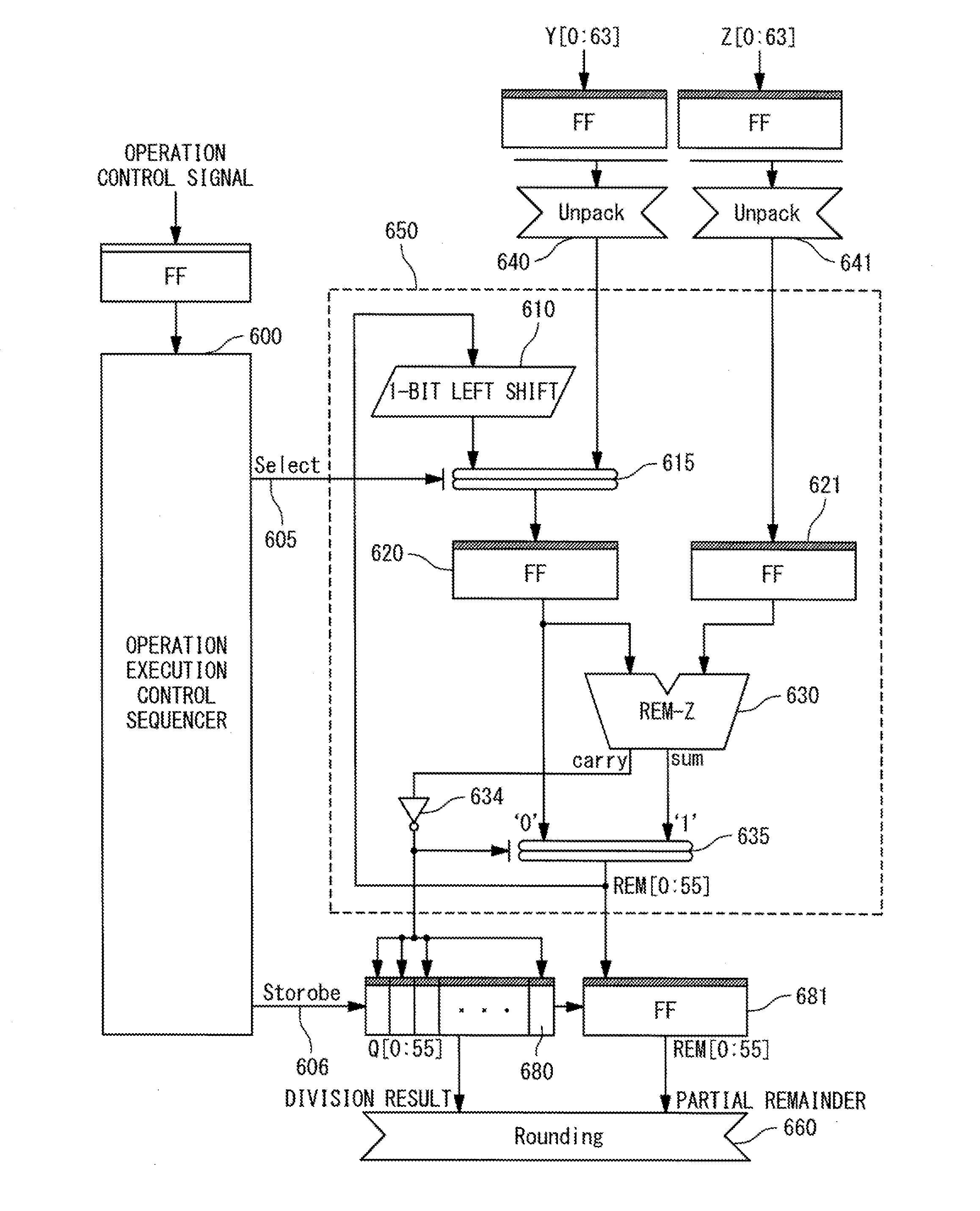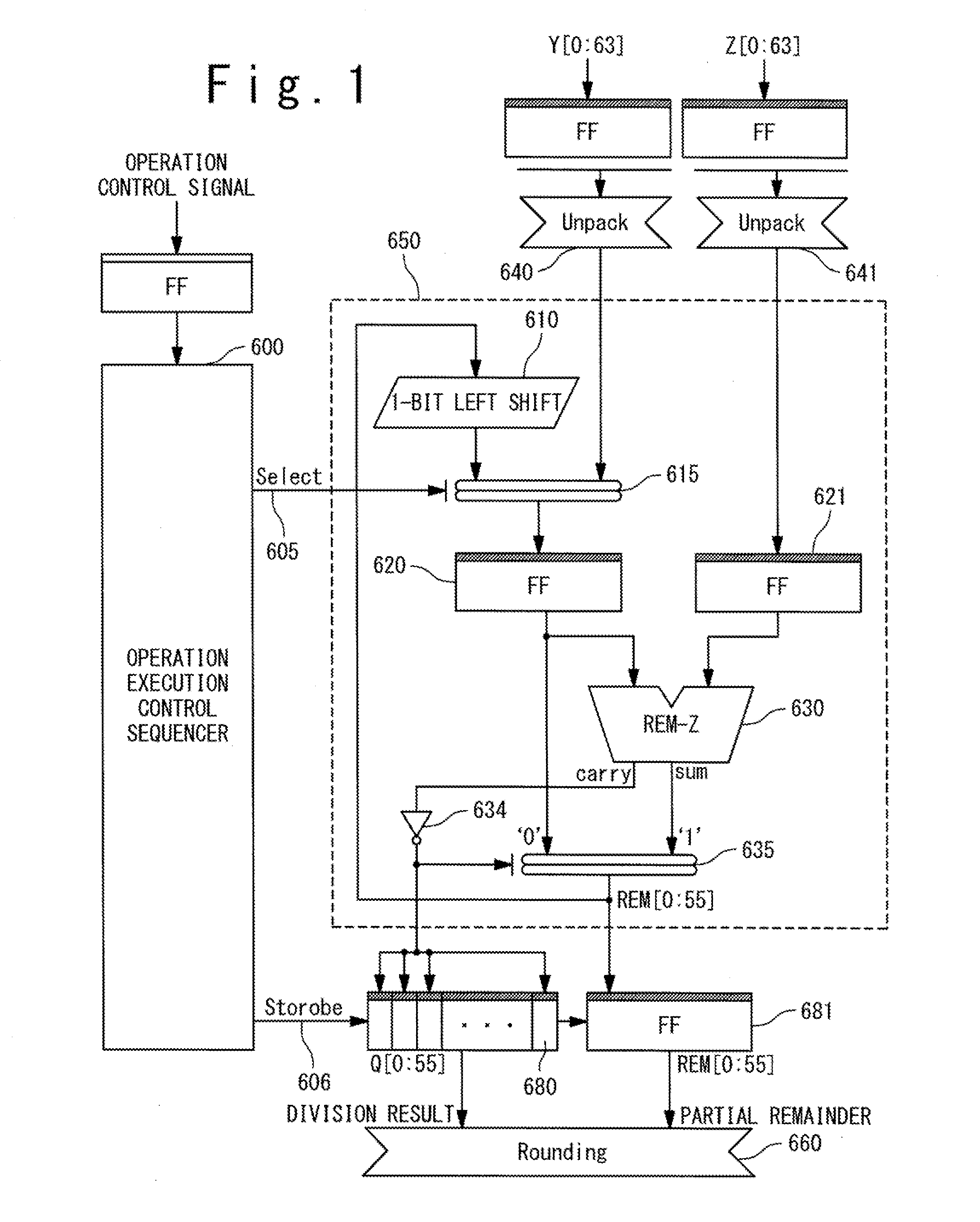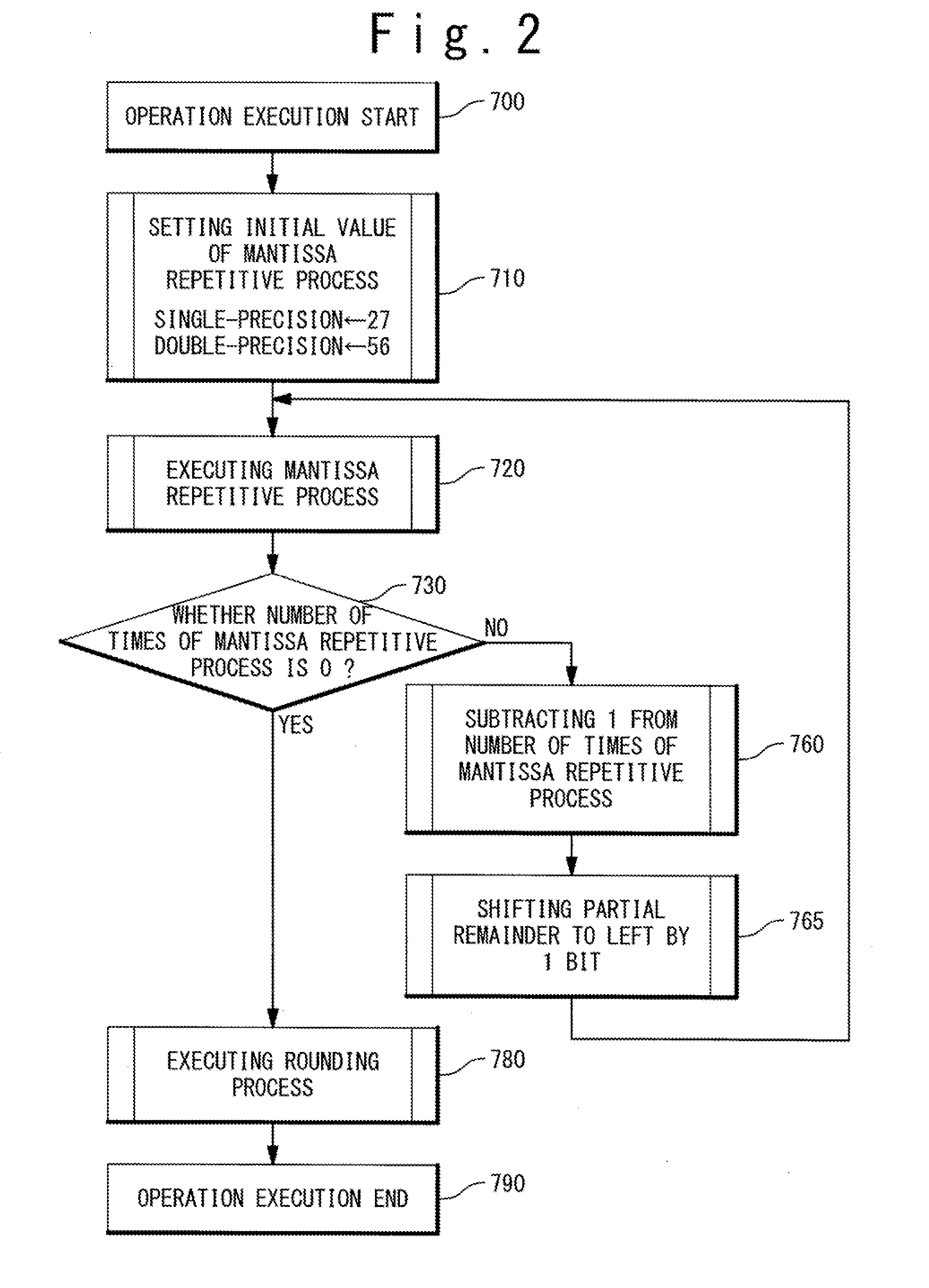Floating point divider and information processing apparatus using the same
a technology of information processing apparatus and floating point divider, which is applied in the direction of instruments, digital computers, data conversion, etc., can solve the problems of digit-recurrence floating point divider using the signed digit as mentioned above, too much operation tat is required, and the operation tat is too high, so as to reduce the operation tat, improve the performance, and reduce the electric power consumption
- Summary
- Abstract
- Description
- Claims
- Application Information
AI Technical Summary
Benefits of technology
Problems solved by technology
Method used
Image
Examples
first exemplary embodiment
[0045]A floating point divider and an information processing apparatus using the same according to the first exemplary embodiment of the present invention will be described below with reference to the attached drawings.
[0046]FIG. 4 is a block diagram showing a configuration of a typical binary digit-recurrence floating point divider. In this binary digit-recurrence floating point divider, two input floating point operands are received by two registers (FFs), respectively. After that, all bits or a part of bits of each of the two input floating point operands are supplied to an unordinary number detecting unit 110, a sign processing unit 120, an exponent processing unit 130 and a mantissa preprocessing unit 190. The each input floating point operand is separated into a sign, an exponent and a mantissa which are respectively defined based on bit positions. The sign, the exponent and the mantissa are supplied to the sign processing unit 120, the exponent processing unit 130 and the man...
second exemplary embodiment
[0068]A floating point divider and an information processing apparatus using the same according to the first exemplary embodiment of the present invention will be described below with reference to the attached drawings.
[0069]FIGS. 7A and 7B are block diagrams showing a configuration of a mantissa repetitive processing unit and its peripheral part in the floating point divider according to the second exemplary embodiment of the present invention. In the present exemplary embodiment, the configuration of the floating point divider is basically the same as that in the first exemplary embodiment. However, the configuration is different from that in the first exemplary embodiment at a point that the configuration shown in FIG. 5 is replaced by the configuration shown in FIGS. 7A and 7B. That is, the radix is changed to 4 (four) and the determination logic is further added for reducing the number of times of the digit-recurrence process. The detail will be explained below.
[0070]Two floati...
PUM
 Login to View More
Login to View More Abstract
Description
Claims
Application Information
 Login to View More
Login to View More - R&D
- Intellectual Property
- Life Sciences
- Materials
- Tech Scout
- Unparalleled Data Quality
- Higher Quality Content
- 60% Fewer Hallucinations
Browse by: Latest US Patents, China's latest patents, Technical Efficacy Thesaurus, Application Domain, Technology Topic, Popular Technical Reports.
© 2025 PatSnap. All rights reserved.Legal|Privacy policy|Modern Slavery Act Transparency Statement|Sitemap|About US| Contact US: help@patsnap.com



